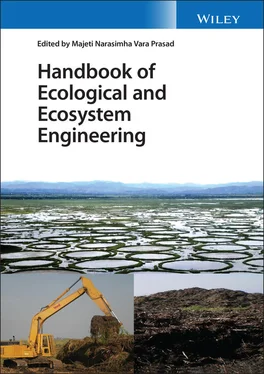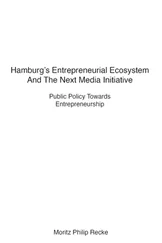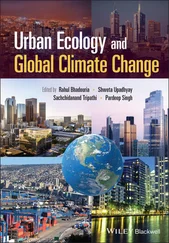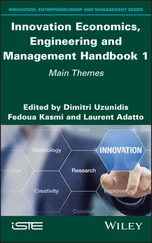1 ...6 7 8 10 11 12 ...33 Close your eyes, prick your ears, and from the softest sound to the wildest noise, from the simplest tone to the highest harmony, from the most violent, passionate scream to the gentlest words of sweet reason, it is by Nature who speaks, revealing her being, her power, her life, and her relatedness so that a blind person, to whom the infinitely visible world is denied, can grasp an infinite vitality in what can be heard.
Johann Wolfgang von Goethe
Ancient thinkers emphasized the first concepts of services provided by Nature to human beings, nurturing what we today call provision services and enjoying sounds, auras, and odors that nurture body and soul. The book On Airs, Waters and Places by Hippocrates (460–370 BCE) – a Greek philosopher considered the father of medicine in the Western world – correlates the environment to different nosological frameworks and population features and includes aspects of daily activities and environmental effects on individuals' health in its analysis.
Services provided by ecosystems to human beings have been described in mythological, philosophical, scientific, and poetic texts. However, it was naturalist and geographer Alexander von Humboldt who bequeathed us our current vision of Nature. Humboldt – who was influenced by the poet Goethe, the philosopher Kant, English romantic writers, and American transcendentalists – offered the idea that Nature exists only insofar as we perceive it within us; according to him, the outer world, ideas, and feelings were associated with each other, so he wrote: “Nature must be known through feelings” [13]. In addition, Humboldt sought to unravel God's designs through Nature.
Alexander von Humboldt's vision was lost over time; however, it was recovered from the 1970s onwards primarily due to the academic elaboration of the concept of Nature services by botanist Walter Westman. Certainly our current vision of services provided by ecosystems has deep roots stemming from Humboldt's contribution, such as the concept of cultural, leisure, and religious services, which play a fundamental role in nourishing the immaterial dimension of human beings.
When Walter Westman formulated the concept of Nature services, he pointed out that benefits deriving from ecosystems should be listed to increase public interest in biodiversity conservation and ensure that decisions are made based on robust information. Later, in 1981, Paul and Anne Ehrlich [14] suggested the term ecosystem services , which is used today.
The contribution of ecosystems to human wellbeing has been described based on the concept of ecosystem services, which was introduced in the 1970s [15] – as previously highlighted – although it was only consolidated in the 1990s due to the economic valuation of 17 services by Costanza et al. [1]. The diffusion of this concept beyond the academic environment became evident after the Millennium Ecosystem Assessment [16], when studies associated with this concept began to gain attention ( Figure 1.5). Its importance was acknowledged by various fields of knowledge ( Figure 1.6); by professionals from all over the world ( Figure 1.7), primarily from the United States, United Kingdom, China, Germany, and Australia; and by the business sector [17].
Several definitions of ecosystem services are available in the literature. MEA, for example, has defined ecosystem services as the benefits humanity gets from ecosystems [16], whereas Constanza et al. [1] defined them as the direct and indirect human benefits resulting from ecosystem functions. Thus, functions are biophysical ecosystem features essential to their own functioning, and services are the product of two or more ecosystem functions; a single ecosystem function can contribute to two or more ecosystem services.
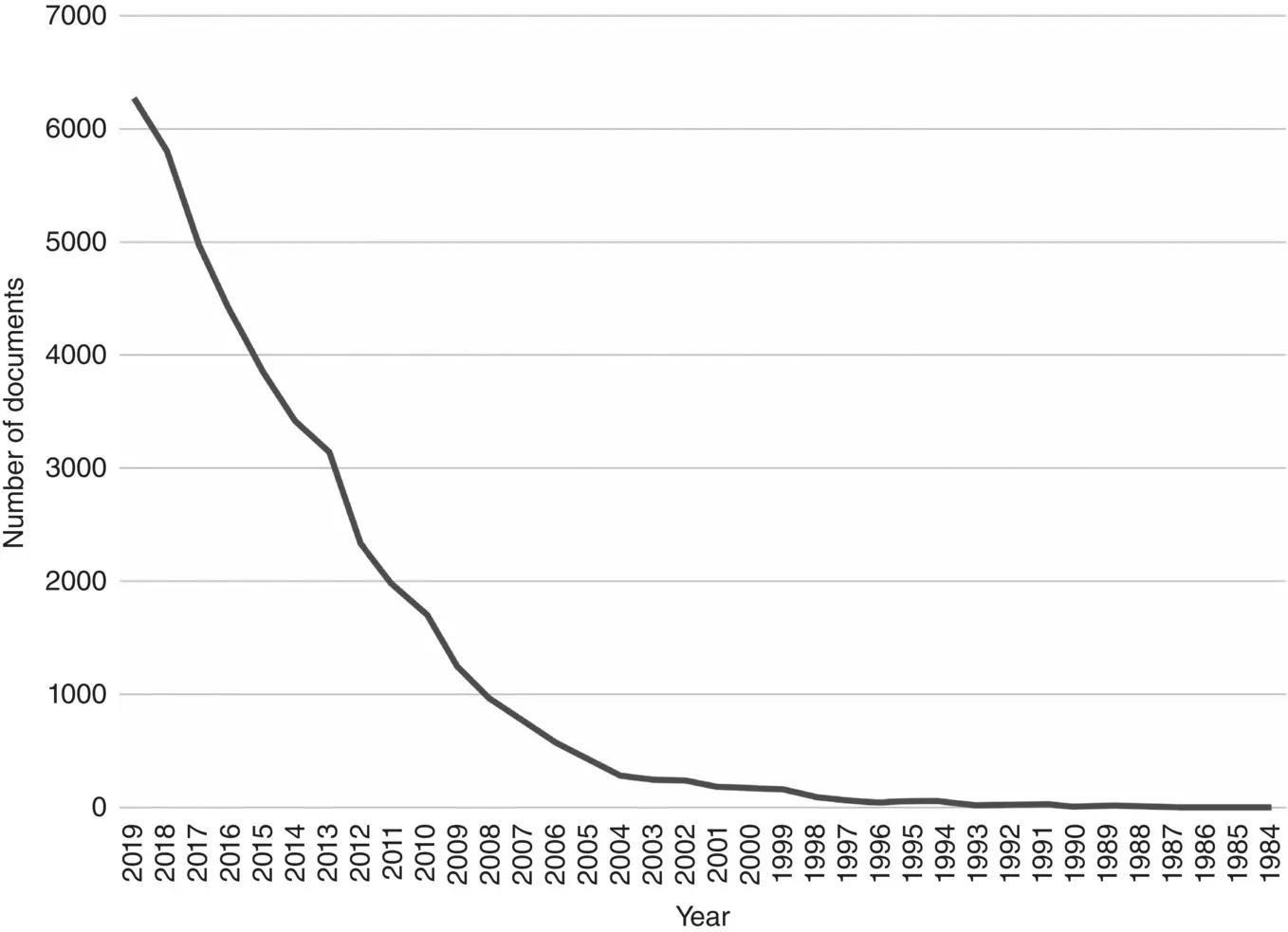
Figure 1.5 Articles, reviews, and books published on ecosystem services.
Source: Data from 1984 to 2019, Scopus 2020.
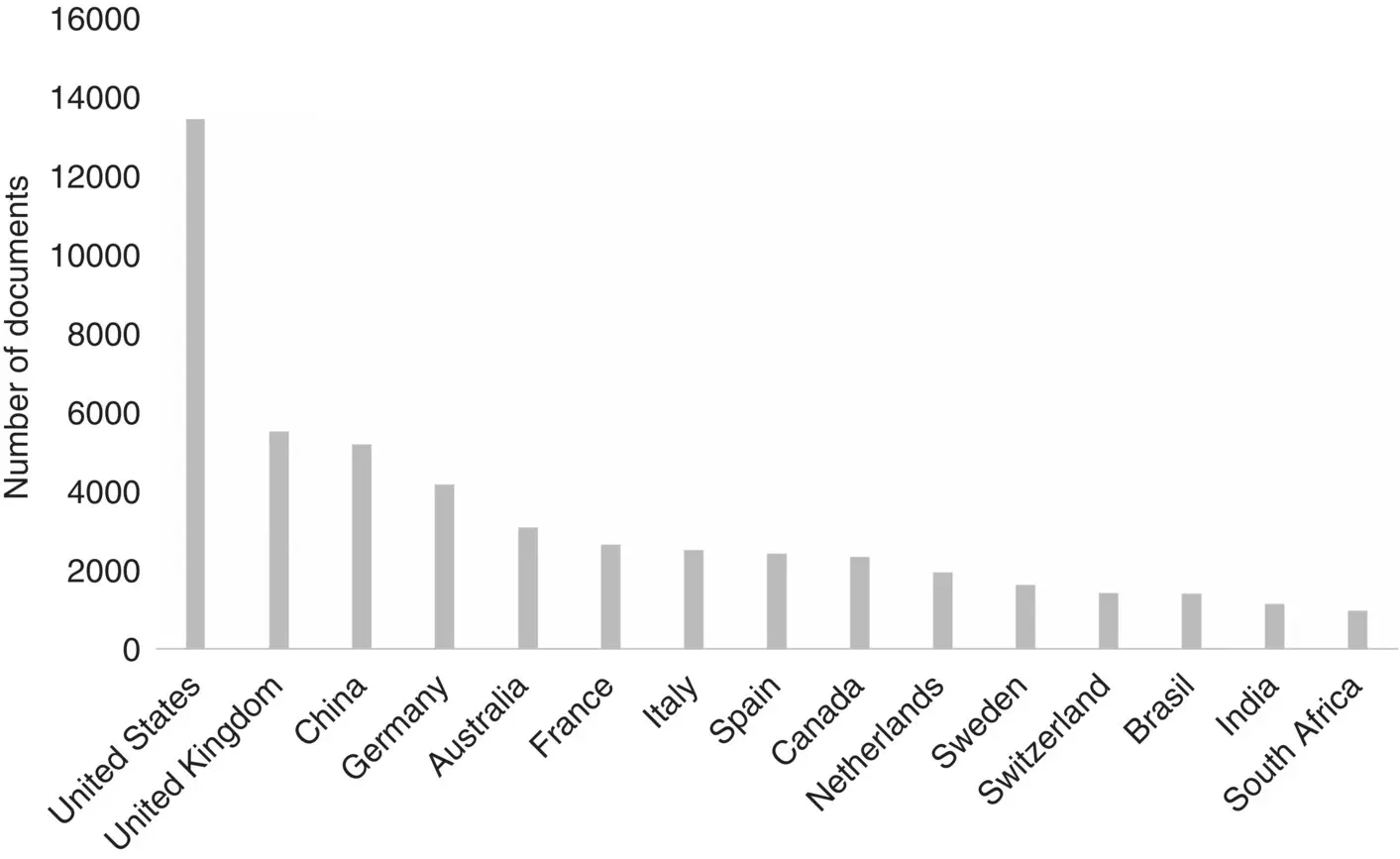
Figure 1.6 Articles, reviews, and books published on ecosystem services by country or territory.
Source: Data from 1984 to 2019, Scopus 2020.
The primary idea observed in the relevant literature on this topic is that the concept of ecosystem services is inherently anthropocentric – as seen in Costanza et al. [1], De Groot et al. [18], Daily and Farley [19], MEA [16], Boyd and Banzhaf [20], and Fisher et al. [21] – since human presence is a valorization agent that allows us to view basic ecological structures and processes as entities full of value, as advocated by De Groot et al. [18].
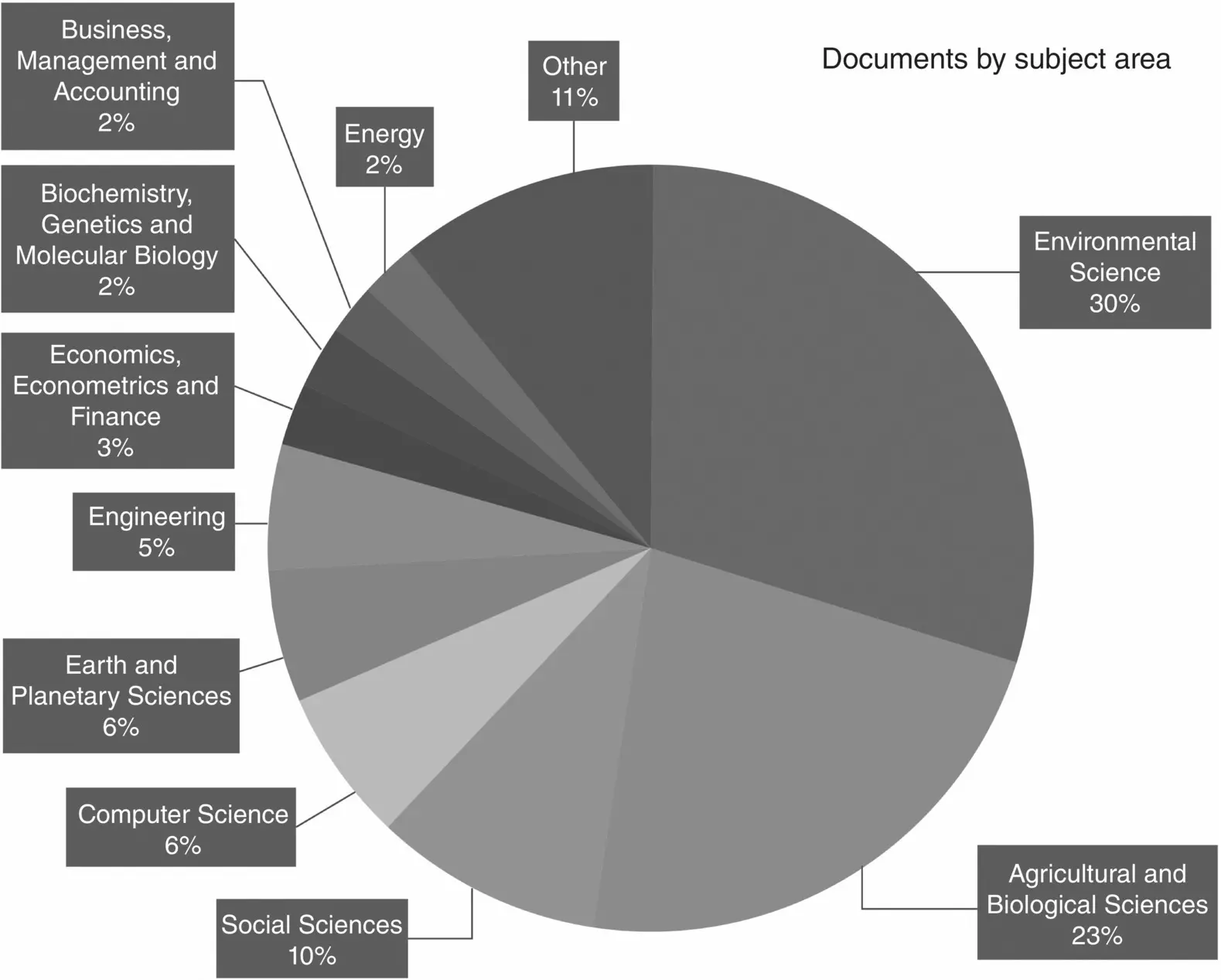
Figure 1.7 Articles, reviews, and books published on ecosystem services by area.
Source: Data from 1984 to 2019, Scopus 2020.
There are several criticisms of the concept of ecosystem services, as well as their valuation proposals, primarily quantitative methodologies. The main criticisms emphasize that the concept is eminently anthropocentric, focuses on economic evaluation, promotes nature‐commodification relationships, and, therefore, favors exploitative human‐Nature relationships; moreover, it goes against biodiversity conservation goals. In addition, it is worth emphasizing that definitions and classifications are inaccurate and that all ecosystem process results are desirable and strengthen the network of relationships in the ecosystem.
Supporters of the concept of ecosystem services refute the critics and explain that this concept goes beyond its anthropocentric nature and instrumental values since it leads to the interest of actors involved in biodiversity conservation and encourages the reconnection, complementarity, and ethical commitment of individuals and society to ecosystems. In addition, the inaccuracy of definitions and classifications improves transdisciplinary collaboration; most environmental services are not linked to the market.
Despite the arguments for and counterarguments against the concept of ecosystem services, it has evolved over the last 30 years from a general heuristic model that highlights the importance of Nature for human wellbeing to a model that highlights how the appropriation of specific ecological structures or processes affects human wellbeing [22]. However, it is important to understand how ecosystems benefit other ecosystems that end up directly or indirectly influencing humanity.
1.3.1 Sizing Ecosystem Services
The first step toward a comprehensive assessment of ecosystem services lies in translating ecological complexity (structures and processes) into a more limited number of ecosystem functions that provide goods and services that are sized and valued by humans [18]. According to the aforementioned authors, understanding the functions of a given ecosystem and the nature and magnitude of its value for humans provides an empirical basis for the classification of useful aspects for humanity.
Many scholars have tried to measure the value of services provided by natural environments. Thus, as a science, economics has developed several forms of analysis over the years, which can be divided into three stages: natural resource economics, environmental economics, and ecological economics [23]. Numerous studies focused on standardizing these investigations were published during this period. Among them, one finds Constanza [24–26], De Groot et al. [18], Hein et al. [27], and Andrade and Romeiro [28].
Читать дальше
